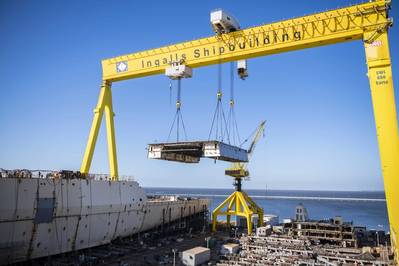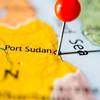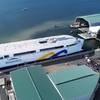Unexpected But Welcome: US Navy’s Amphibious Warship Plan Supported Across Political Parties & Government Branches
Here’s some good news for America’s sea power. While the U.S. Navy has initiated another review of its 30-year shipbuilding plan in the face of widespread dissatisfaction, one element within that plan has been praised: the decision to provide funding for continued construction of amphibious warfare ships. These vessels offer unmatched flexibility and the capability of transporting, deploying, and supporting ground combat forces – typically U.S. Marine Corps – to conduct amphibious assaults, humanitarian operations, or disaster relief missions. This capability is essential for the United States as a maritime nation with a global security commitment. Whether responding to a natural disaster or deterring aggression, amphibious warships provide a unique platform for rapid and decisive action.
A few years ago, Congress mandated that the Navy maintain a fleet of 31 large and medium-size amphibious warships. To achieve this, building more San Antonio-class landing platform dock (LPD) ships is critical. Previous Congresses provided funds for these ships, but the Pentagon had been hesitant. Until submission of the Fiscal Year 2025 Pentagon budget to Congress last month, the Defense Department was considering either ending acquisition of these ships or changing their designs to reduce construction costs. As a result, the Navy was in an amphibious shipbuilding pause.
But those alternatives are no longer being considered, and in a rare and welcome moment of bipartisan, bicameral, and Executive-Legislative branch unity, both parties now support the plan for 31 amphibious warships. This about face is due in part to “perceived operational shortfalls” in the amphib fleet, according to Hudson Institute's Bryan Clark, when such warships were not available to support disaster relief in Turkey or evacuate noncombatants from South Sudan last year. “It was a black eye,” he recently told Jane’s.
The Navy now plans to buy three new San Antonio-class ships: LPD-33 in FY25, -34 in FY27 and -35 in FY29. The Flight II LPDs are sophisticated ships, with upgraded AN/SPY-6 air surveillance radars and the ability to land MV-22 Ospreys, the combat-proven Marine tiltrotor aircraft. The newest LPDs are outfitted for defense against drones and gray area threats. With consistent funding and a stable schedule to start construction of these ships every two years, it is widely agreed that this plan will maintain a healthy supply chain and industrial base for the amphibious warship fleet. Case in point: the LPD engines are made by Fairbanks Morse Defense, the last surviving U.S. maker of this type of marine engine.
America’s current inventory of large and medium-size amphibious warships is composed of five classes of four different ship types:
Landing Helicopter Assault (LHA) – Two America-class “big deck” ships, successors to the Wasp-class, built starting in the 2010s. These carry more than 1,500 Marines and two dozen fixed-wing, rotary-wing and tiltrotor aircraft – including the F-35B variant capable of short takeoffs and vertical landings (STOVL). Two more LHAs are under construction and long-lead advanced procurement activities for a fifth ship are underway.
Landing Helicopter Dock (LHD) – Seven Wasp-class “big deck” ships, built during the late 1980s into the early 2000s, capable of carrying similar quantities of Marines and aircraft as the newer America-class ships.
Landing Platform Dock (LPD) – Twelve San Antonio-class ships, the first built in the year 2000. Each carry about 700 Marines who go to shore aboard a variety of landing craft or inside aircraft that launch from but do not reside aboard these ships. The 13th and final “Flight I” San Antonio is under construction; the first three Flight II LPDs – redesigned to improve capability and affordability – are being built. If the FY25 budget is approved, construction of the next three Flight IIs will be authorized.
Landing Ship Dock (LSD) – Six 1980s-vintage Whidbey Island-class and four 1990s vintage Harpers Ferry-class ships the Navy would like to retire before the end of this decade. Their exact retirement dates will depend on when new LPDs are available to relieve them.
The Navy wants to further boost this highly capable force mix with a fifth type of amphibious warship: the Landing Ship Medium (LSM), formerly known as the Light Amphibious Warship. These are the modern versions of the World War II ships the Navy used to “Island Hop” across the Pacific to defeat Imperial Japan. In its FY25 budget request, the defense department asked for almost $270 million to buy the lead ship of this new class, designed to fit between the larger LHA/LHD/LPDs and the smaller landing craft that deliver Marines ashore. This new ship is being designed to support the Corps’ new Marine Littoral Regiments, each of which is expected to need nine. The Navy could buy between 18 and 35 of them and, because of their smaller size – despite their new name that includes the word “medium” – they are not expected to count toward the congressional mandate for 31 large and medium-size amphibs.
The Navy's commitment to a robust amphibious warship construction plan is a strategic necessity in an increasingly complex and contested global landscape, especially in the western Pacific. These versatile vessels are the backbone of American power projection, serving as critical assets for humanitarian missions, disaster relief, and national defense. Investing in a modern and capable amphibious fleet ensures the Navy's ability to safeguard vital interests, protect allies, and deter potential adversaries.
The author
Greg Alan Caires is a visiting fellow at the Lexington Institute, a think tank in Arlington, Va. A veteran U.S. Navy Fleet Marine Force Warfare Officer, he earned a Master’s degree in National Security from the Naval War College, and he served in Afghanistan during Operation Enduring Freedom.











